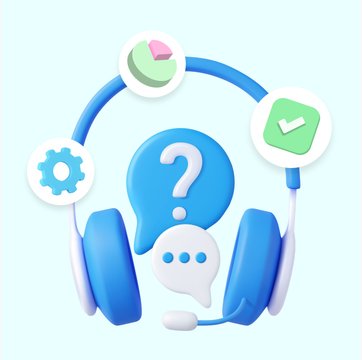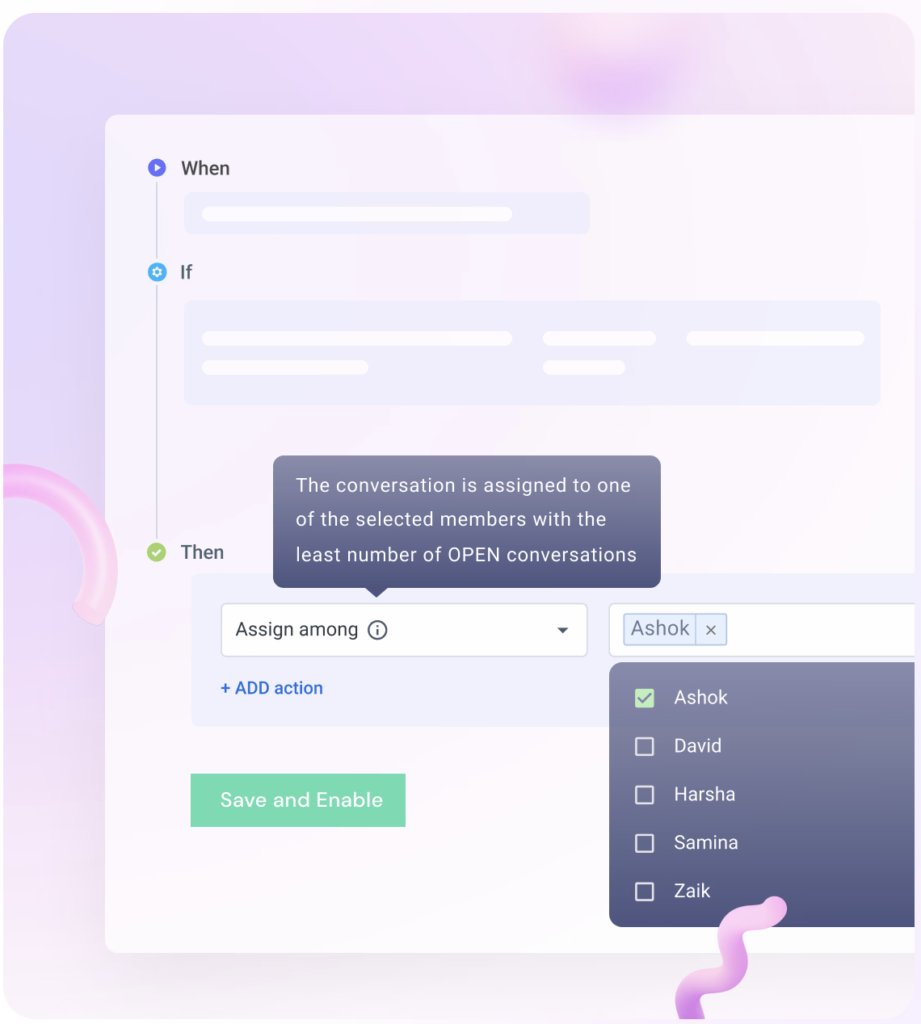A Guide to Implementing a Ticket Tracking Software for Your Business

Table of contents
When you’re managing hundreds or thousands of customer issues daily, you need a streamlined approach in place.
It’s extremely time-consuming to be checking every customer query to see what’s happening and who is working on it.
So, what if there was a way to have complete visibility into every single customer ticket?
That’s where a ticket tracking software comes in handy.
Table of Contents
- What is Ticket Tracking?
- What is a Ticket Tracking Software?
- What are the Benefits of Ticket Tracking?
- How to Implement a Ticket Tracking Software?
- 1. Choosing the Right Ticket Tracking Software
- 2. Setting Up The Ticket Tracking Software
- Final Words
What is Ticket Tracking?
Ticket tracking is a systematic way for businesses to manage and organize incoming queries, complaints, requests, or feedback. When a customer reaches out to a brand, the communication is often converted into a “ticket.” This ticket has a unique ID, ensuring it can be easily tracked and referenced.
What is a Ticket Tracking Software?
A ticket tracking software is a tool through which you can track the status of customer queries that offers a centralized hub to store all communication between your support staff and customers – in the form of tickets. Your Customer support team can access this database to manage and organize customer queries.
It’s like having a virtual helpdesk that automates the whole process of providing visibility into customer complaints – what’s their status? Who are they assigned to? How soon are they getting resolved?
What are the Benefits of Ticket Tracking?
Imagine you have full visibility into the status of every customer query. You know ‘when’ every customer support ticket is getting resolved. If there’s a delay, ‘why’ that’s happening.
This is what a ticket tracking software helps you achieve. The other benefits of using such a platform, include:
- Improved customer satisfaction: Ticket tracking systems help agents resolve queries more efficiently and in a streamlined way. Businesses that respond swiftly to customer requests are more likely to retain customers.
- Increased productivity: Ticketing tracking software can help businesses increase productivity by automating repetitive tasks. It frees up your support agents’ time so that they can focus on more important tasks.
- Better data insights: Ticketing software can provide businesses with valuable insights into customer inquiries, such as the most common types of tickets, query response time, average ticket resolution time, and customer satisfaction scores. Customer metrics like these can be used to improve internal processes and ultimately, deliver timely support.
How to Implement a Ticket Tracking Software?
It is true that a good ticket tracking software not only makes internal operations more efficient but also helps boost customer satisfaction. But, what is also important is getting the right software for your business and smoothly integrating it into your existing workflows. So, let’s see how this can be done.
We have divided this segment into two main parts:
- Choosing the right ticket tracking software
- Setting up the ticket tracking software
1. Choosing the Right Ticket Tracking Software
There are way too many ticket software tools in the market today. So, how do you find the one which is most suited for your business?
Define Your Business Needs
Before looking out for options, it is important to sit down with your team and jot down your support needs and goals. Some important questions which can help you identify your business needs may include:
- What is the ticket volume you receive on a daily basis?
- What are the types of queries? Are they primarily technical or service related?
- Where are your customers most active? Do they reach out to you through email or social media?
- Do you need functionalities like multi-channel or omnichannel support, workflow automation, and reporting capabilities?
Research and Compare
Once your business needs are clearly identified, look for a few ticket tracking tools in the market. Remember that the first software you land up on may not be the right solution. Therefore, research is the key.
Look for a tool that aligns with your needs and offers scalability as your business grows. Read reviews and compare features to shortlist at least two to three software. Websites like G2 and Captera can help you with reviews and comparisons.
Recommended Read:
Top 10 Helpdesk Ticketing Systems for Your Business
Opt-in for Free Demonstrations
Most ticket management software offer free demos or walkthroughs. You can book a demo of a helpdesk ticketing system like Hiver to see its features in action before committing.
A demo call is beneficial in several ways. You can:
- Get a walkthrough of the tool’s core features
- Understand if it can be customized to your needs
- Explore the pricing structure better.
Do not forget to make a list of questions you’d like to ask to get the most out of the demo.
Leverage Trial Periods
Like free demos, most ticket tracking software provide free trials for a limited time period. This is an opportunity for you to test the ticket tracking system. It is important to make the most out of these trial periods. Test various possible scenarios and gather feedback from your team.
For instance, you can set up mock scenarios of your customers reaching out to you and check how helpful the software is. Is the tool to organize queries with proper tags? Does your team get alerted when the SLA (Service Level Agreements) for a support request is missed? Do you get visibility of your team’s workload? You’ll get these answers by using the free trial.
Look out for the Best Deals
Although budget decisions are made early when you define your business needs, some help desk software offer additional discounts – depending on your use case and the number of users you want to onboard.
For instance, Hiver has a special startup program offering the tool free for the first six months, exclusively for startups.
Similarly, tools like Freshdesk, Zoho Desk, and HubSpot Service Hub offer free plans for small teams.
Recommended Read:
– Top 10 Help Desk Software for Startups in 2025
2. Setting Up The Ticket Tracking Software
Setting up the software and making everyone accustomed to using it might take some time. For some, learning an entirely new software might feel overwhelming.
It is important to be patient throughout the process and have a dedicated vendor representative to solve your issues. Below are a couple of pointers that can help smoothen the process:
Train Your Team
Training your support team thoroughly to use the new ticket tracking software is essential. After all, they are going to use the tool the most. Some pointers to keep in mind:
- Ensure the team attends the onboarding call: Once you finalize the ticket tracking software, an onboarding call will be scheduled by your vendor. Make sure everyone from the support team attends the call. Keep the recording of the call handy for future reference.
- Make use of training sessions: It may happen that your team may need multiple training sessions to get familiar with the software. Make sure that your vendor is prepared to conduct these sessions. You can also ask for training modules and knowledge bases to help your team stay updated. These are good self-service options and can also help with FAQs your team may have.
- Have a support representative available: Have a vendor representative available to help your team clear out their queries. You can also reach out to their dedicated support team to resolve any issues in real-time.

Migrate Old Tickets/Conversations
This is especially important If you’re switching from an existing ticket management system. Ensure there’s a process to migrate old tickets so that no data is lost. This will also help in updating your customer records so that your team can have contextual conversations with your customers.
Some steps that can help in migration are:
- Determine Data Structure: Finalize the data structure of both your old and new systems. This will help in mapping fields correctly during migration, ensuring data integrity. For example, you can add tags or labels to differentiate old queries from new ones.
- Make sure to backup old data: Before initiating the migration, backup all ticket data from the old system. This acts as a safety net in case of any migration mishaps.
- Prioritize Tickets: Prioritization is important to adequately address your customer needs. Prioritize tickets based on their status, relevance, and age. For instance, unresolved recent tickets can be of higher priority than resolved ones from three years ago.
Recommended read:
– Gmail and Google Apps Migration Guide
Customize the Software to Suit Your Business
Most ticket tracking software offer customization. Tailor it to reflect your brand and operational needs. For instance:
- Modify User Interface: Modify the software’s dashboard and layouts to make it intuitive for your team. A user-friendly interface can drastically improve efficiency.
- Automate Existing Processes: If you have certain protocols already in place, ensure the software adheres to them. For instance, in your support process ,if you have a specific service workflow for escalated complaints, your ticket tool should be able to automate this workflow. Automatic routing saves you from manual work.
- Custom Fields and Tags: Most ticketing tools allow you to create custom fields and tags. These can be used to categorize and prioritize tickets based on your business’s needs, like “Urgent,” “Billing Issues,” or “Product Feedback.”

Set Up Notifications and Alerts
Notifications and alerts are important in your ticketing solution. They ensure that tasks are promptly addressed and nothing slips through the cracks. Some ways to set up alerts are:
- Define Priority Levels: Determine the priority levels of tickets and customize alerts accordingly. Categories might include “High,” “Medium,” and “Low.” Escalations can be categorized as high-priority tickets which require immediate attention and should trigger instant alerts.
- Choose Notification Channels: Decide where you want the notifications to appear. This can be within the software dashboard, push notifications to a mobile device, via email, or even as text messages in urgent cases.
- Set Up Reminders: For tickets that haven’t been addressed within a specific timeframe, activate reminder notifications. This ensures that pending tickets are not forgotten.
Integrate with Other Systems
Integrate your ticket tracking software with other systems and apps used by your business. This ensures a smooth operational workflow. A few integrations may include:
- Email Platforms: Syncing your ticket tracking system with email platforms like Outlook or Gmail will ensure timely ticket creation automatically.
- Communication Platforms: Collaboration is an important aspect to streamline support operations. Integrating the tool with platforms like Slack, Microsoft Teams, etc., will notify team members instantly about ticket updates. You can also conduct video meetings for complex issues.
- Project Management Tools: Converting tickets into tasks in tools like Asana, Jira, or Trello will help in tracking the progress and collaborating with other teams.
For instance, Hiver allows integrations with some popular platforms.
Analyze Ticket Data
Analyzing the data derived from the tickets helps in the continuous improvement of your customer support team. Through these metrics, you can extract valuable insights, leading to better support strategies. A few ways to leverage the data include:
- Monitor Resolution Time: Track the time taken to resolve each ticket. If certain tickets take longer, investigate the causes and work on improving resolution speeds.
- Evaluate Customer Satisfaction: After resolving tickets, collect feedback to gauge customer satisfaction. Analyzing this feedback will give insights into customer experience and areas of improvement.
- Study Agent/Team Performance: Analyze individual agent or team performance based on tickets handled, resolution time, and customer feedback. This can guide training needs or resource allocation.
Final Words
Customer tickets are real people with real concerns. Hence, your ticket tracking software should help ensure that every ticket is addressed in an empathetic and efficient manner.
The best ticket tracking platforms are the ones which are extremely easy to use, and yet offer powerful features.
Hiver is one such platform. Since Hiver works inside Gmail, teams can get started without any extensive training. They get complete visibility into queries from multiple channels – email, live chat, whatsapp, and more – without leaving their Gmail inbox. How cool is that?!
Frequently Asked Questions (FAQs)
1. What are the key considerations when choosing a ticket tracking software?
Consider the following factors to select the right ticketing software:
- Define your needs: Identify what you need to improve or solve in your support processes.
- Check scalability: Ensure the software can handle growth in terms of users and ticket volume.
- Assess integration: It should connect easily with your existing systems.
- Evaluate user-friendliness: An intuitive and user-friendly interface helps you onboard easily.
- Reporting features: Robust analytics that offers insight into key support metrics.
- Automation features: Look for automation capabilities to streamline workflows.
- Security compliance: Verify that the software meets necessary security and compliance standards, such as ISO-certified and GDPR-compliant.
2. What are some of the best ticket-tracking software?
Here are some popular ticket tracking software:
3. What are the advantages of using Hiver for ticket tracking?
Hiver offers several key advantages for ticket tracking:
- Works inside your inbox, unlike most ticket-tracking software. Teams don’t have to spend time and effort learning new software
- Enables teams to offer assistance across multiple support channels – email, chat, phone, and more.
- Enhances efficiency with automation tools and collaborative features like Notes and Shared drafts.
- Provides detailed insights into performance metrics like FRT, CSAT, and resolution time.
4. Can Hiver support multi-channel customer interactions for ticket tracking?
Yes, Hiver can support multi-channel customer interactions for ticket tracking.

































